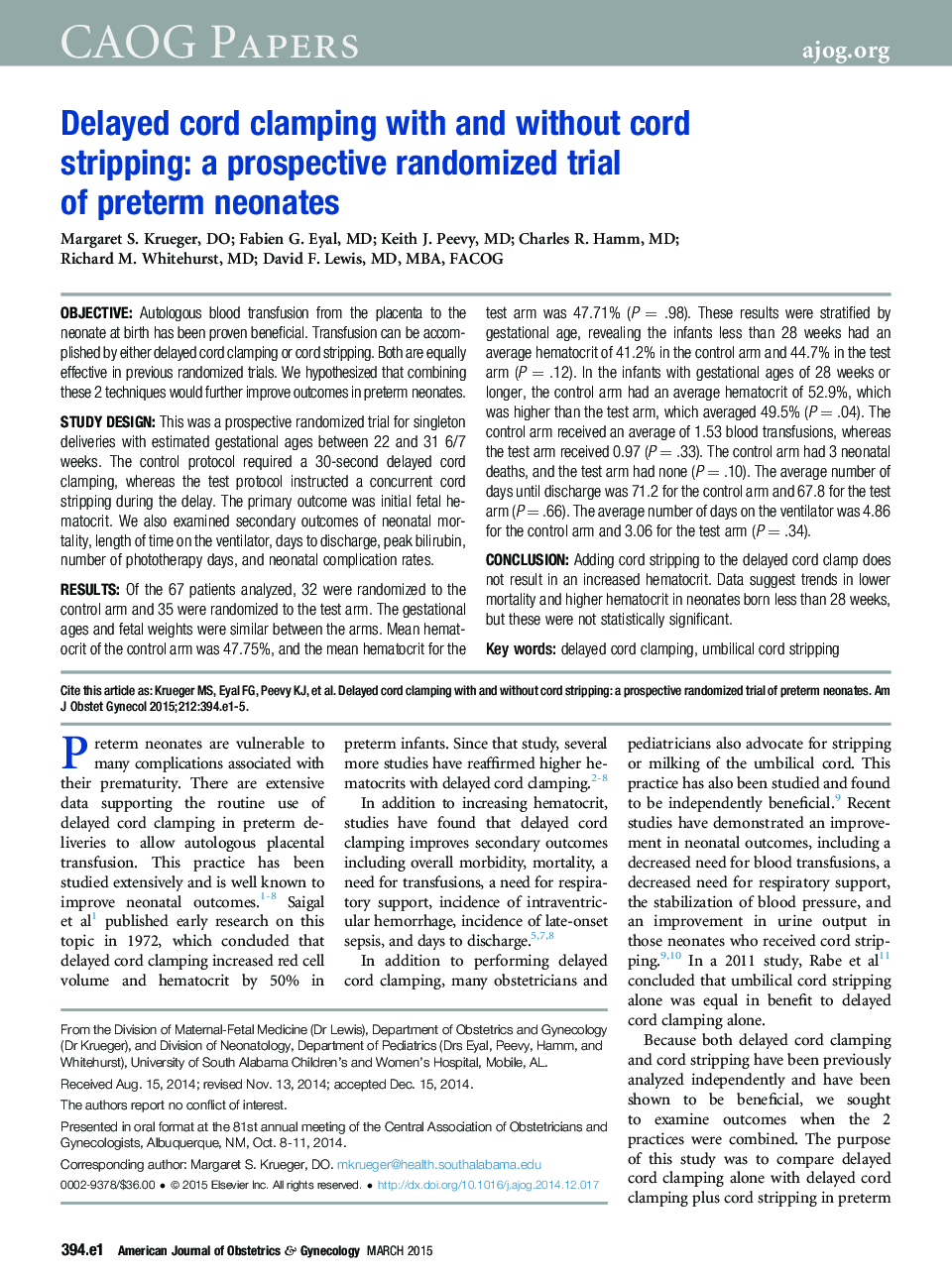| کد مقاله | کد نشریه | سال انتشار | مقاله انگلیسی | نسخه تمام متن |
|---|---|---|---|---|
| 6144401 | 1594908 | 2015 | 5 صفحه PDF | دانلود رایگان |
ObjectiveAutologous blood transfusion from the placenta to the neonate at birth has been proven beneficial. Transfusion can be accomplished by either delayed cord clamping or cord stripping. Both are equally effective in previous randomized trials. We hypothesized that combining these 2 techniques would further improve outcomes in preterm neonates.Study DesignThis was a prospective randomized trial for singleton deliveries with estimated gestational ages between 22 and 31 6/7 weeks. The control protocol required a 30-second delayed cord clamping, whereas the test protocol instructed a concurrent cord stripping during the delay. The primary outcome was initial fetal hematocrit. We also examined secondary outcomes of neonatal mortality, length of time on the ventilator, days to discharge, peak bilirubin, number of phototherapy days, and neonatal complication rates.ResultsOf the 67 patients analyzed, 32 were randomized to the control arm and 35 were randomized to the test arm. The gestational ages and fetal weights were similar between the arms. Mean hematocrit of the control arm was 47.75%, and the mean hematocrit for the test arm was 47.71% (PÂ = .98). These results were stratified by gestational age, revealing the infants less than 28 weeks had an average hematocrit of 41.2% in the control arm and 44.7% in the test arm (PÂ = .12). In the infants with gestational ages of 28 weeks or longer, the control arm had an average hematocrit of 52.9%, which was higher than the test arm, which averaged 49.5% (PÂ =Â .04). The control arm received an average of 1.53 blood transfusions, whereas the test arm received 0.97 (PÂ = .33). The control arm had 3 neonatal deaths, and the test arm had none (PÂ =Â .10). The average number of days until discharge was 71.2 for the control arm and 67.8 for the test arm (PÂ = .66). The average number of days on the ventilator was 4.86 for the control arm and 3.06 for the test arm (PÂ = .34).ConclusionAdding cord stripping to the delayed cord clamp does not result in an increased hematocrit. Data suggest trends in lower mortality and higher hematocrit in neonates born less than 28 weeks, but these were not statistically significant.
Journal: American Journal of Obstetrics and Gynecology - Volume 212, Issue 3, March 2015, Pages 394.e1-394.e5
